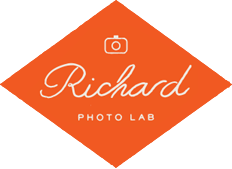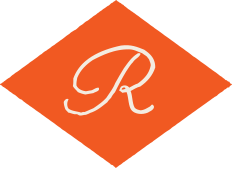When we think of summer, we think sunshine at the beach, bright blue pool water, glowing rainbow sunsets... and all of that, of course, makes us think of Ektar! Now's the time to try out this light-hungry, highly-saturated stock from Kodak.
So, before you grab a roll of 35mm or 120, Richard gathered insights from photogs who shoot Ektar on the regular to help get you started! They've shared everything from the best subject matter to lighting scenarios to metering & exposure tips—and you may just find that Ektar can be your go-to film for more than just summertime...
 Photo by Jennifer Lawrence
Photo by Jennifer Lawrence
"It is a tricky film to master, but it is magic in almost every lighting condition once you do. Yes, even evening, NIGHT, indoors, sunrise, sunset, and of course, my favorite full sun.
"When the sun is high, I rate my film at box speed and meter for the shadows, and I let the film work its magic. You have to be spot on when metering, though, because overexposing things can go red, and underexposing the film gets muddy. I also am a firm believer that how your film turns out is half you doing your job correctly and the other half having an amazing lab to work with."
 Photo by Gilbert Pereda
Photo by Gilbert Pereda
"One of the things I love so much about shooting Ektar is the saturation. Shooting this film stock in the desert, for example, means I can capture the true multiple colors in one frame. I take multiple readings to make sure I can balance my exposure better. I love over exposing it by one stop—it shows a dreamy look yet vibrant colors. Just make sure to have enough sunlight when doing this!"
 Photo by Jordan Myers
Photo by Jordan Myers
"First, the biggest myth about Ektar: that it shouldn't be used for portraits. This is rubbish! Ektar tends to accentuate reds and pinks, so this just means that like any other film choice decision, you need to consider the colors of the subject. My Scottish father's ruddy skin is going to look a little too flushed for my liking, but models with black or brown or olive-toned skin will glow on Ektar.
"Second, while it's a great film for landscape and produces realistic colors, some would say more accurate than Portra, it does have less latitude than Portra—and it really benefits from an incident light meter.
"Lastly, it can be pushed! Like any other film, attention should be paid to the quality of the light of course, but I've successfully pushed it to 400, though usually I don't go further than 200. Its naturally small grain means that it will still look great after pushing."
 Photo by Daniel Krautbauer
Photo by Daniel Krautbauer
"I mostly use Ektar in situations where I would prefer to capture a scene on reversal film but the lighting is challenging, like when it's changing too fast or is too uneven to achieve the type of exposure I want. In the past these have usually been things like sunrises, sunsets and neon signs on Route 66. Ektar has a very similar look to reversal film—beautiful saturated colors, fine grain—with the latitude of negative film. For example, when photographing an awesome old neon motel sign, I know with Ektar I can fairly safely overexpose the glowing neon tubes by as many as 3-4 stops (I spot meter with a Sekonic L-858D-U). This allows me to retain a bunch of detail in the darker areas surrounding the sign, often including the motel building itself.
"Spring flowers are one of the few subjects I intentionally shoot on Ektar to take advantage of the film’s own unique qualities. With flowers, however, I do prefer to photograph under diffused lighting as the saturation can sometimes get a bit out of hand for my personal taste under direct sunlight."
 Photo by Lorena Franco
Photo by Lorena Franco
"Ektar is a light hungry film and, for me, it's the perfect film to capture summer in. It translates light beautifully! I think it's a great film to shoot anything in; it works for people with the beautiful skin tones it delivers but it also works great for travel photography.
"As I mentioned, this film loves light so it is best to shoot on a bright day, where there is a lot of light available… I mostly always shoot overexposing by one stop or so."
 Photo by Carole Moreau-Soquet
Photo by Carole Moreau-Soquet
"I really love to shoot landscapes or urban landscapes with this film. I think it's perfect when the colors of a scene are bright and sharp—Ektar is soft and sweet but also very vibrant. Even though it's only 100 ISO, I can use it during the night, without a tripod.
"The best advice I can give: 1) try to play with the sun light to have flare on the picture, 2) use with a medium format camera (it's magic in a Hasselblad or a Mamiya), and 3) try it just after the rain, when the sun comes out!"
 Photo by Krystal Finneran
Photo by Krystal Finneran
"Ektar 100 was the first color film stock I used… as difficult as it was to shoot with, it taught me so much about measuring light. I utilized mostly sunny 16 in the beginning, being that I had no working light meter and I ONLY shot it outdoors. I was not a fan of how it looked in super bright direct sunlight, so I tend to avoid that now that I know better. I shoot it at box speed and play around with a nice open aperture since the film stock LOVES light."


